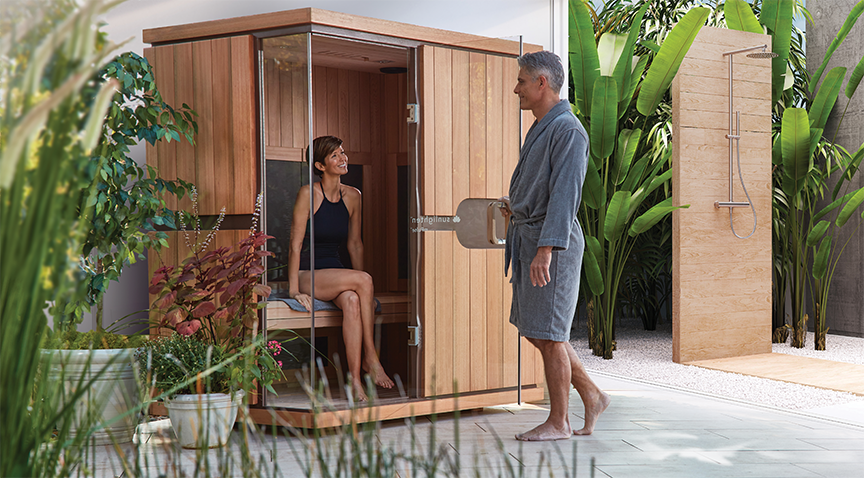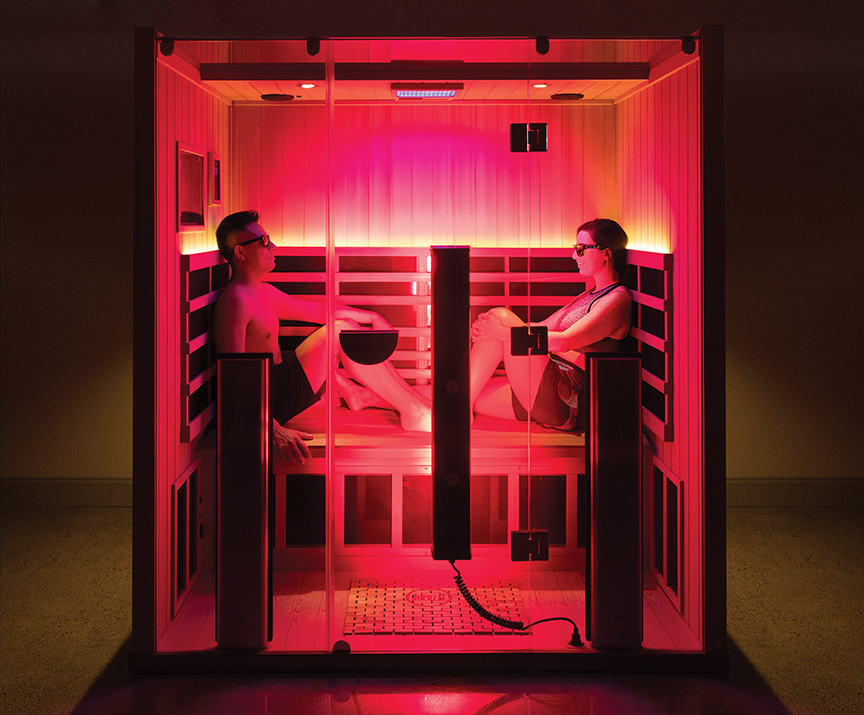By Camilla McLaughlin
As COVID-19 reset consumer appreciation for all things related to wellness, demand for in-home products from Pelotons to saunas hit record levels.
Lady Gaga is reportedly a sauna fan, along with a raft of celebs, including Jennifer Anniston and Gwyneth Paltrow. Sessions in an infrared sauna, dubbed sauna bathing, are the latest in wellness, and celebrities are not the only ones looking for a boost. Instead of raising the temperature in the air using heated stones or other sources, this modality uses infrared light to create heat within the body and does so at lower temperatures than traditional saunas, which typically are in the 200-degree Fahrenheit range.
While they lack the lore and romanticism associated with their Scandinavian peers, saunas using infrared light instead of thermal heat are gaining advocates and a growing share of wellness dollars. By mid-2021, Sunlighten, a manufacturer with a 20-year track record, reported that overall sales nationwide were up more than 60 percent over 2020’s record. By mid-summer, sales were up 30 percent in California, Texas and Florida. Even industry veterans such as Sunlighten founder Connie Zack were surprised by these increases in warm-weather states.
Anyone who has spent time in the sun has experienced infrared. Approximately 52 to 55 percent of sunlight consists of infrared rays. On the electromagnetic spectrum, a continuum of light waves organized by how they interact with matter, infrared falls just below red, the last visible light on the low end of the spectrum. The term refers to a range of waves — near, mid and far — determined by the wave size, frequency and amount of energy. Near infrared is the shortest wavelength and is credited with skin renewal. Mid is believed to reduce inflammation and promote healing. Far infrared penetrates deeper and even helps burn calories and promotes relaxation.
Although traditional saunas have long been considered restorative, infrared is purported to be more than just a feel-good experience and is credited with a range of effects, including boosting immunity and aiding in muscle recovery, according to the industry. While many infrared saunas just use far infrared, some combine all three waves, which manufacturers say enhances efficacy.
“We were the first sauna company to combine carbon and ceramic to create a superior infrared wavelength that deeply penetrates your body. The ceramic/carbon combination is unsurpassed in providing superior detoxification, stress-reduction, immunity boost, relief of joint pain and muscle soreness, relaxation and a host of other health benefits,” says Bruce Weinberg, director of marketing for Clearlight Infrared, manufacturers of Jacuzzi brand saunas.
Clearlight units also cancel out all electromagnetic fields, energy waves with frequencies below 300 hertz per second. Sunlighten, according to Zack, used clinical studies to determine how to combine all three wavelengths to bring the most benefit and also how to incorporate six different wellness benefits into the programs built into the saunas.
A typical 30-minute infrared session raises core body temperature approximately 3 degrees, an effect similar to a cardio workout. Manufacturers tout a number of benefits, and there is some research to back up these claims. In some countries, infrared is seen as therapeutic. “In Japan, infrared sauna is an accepted and standard therapy of heart disease and is even prescribed, because it is shown to improve the function of the cells that line the arteries and their blood flow,” explained Joel Kahn, MD, a cardiologist and clinical professor of medicine at Wayne State University School of Medicine.
Residential units are available in a range of sizes and configurations and are typically fabricated using Eucalyptus, Western Red Canadian Cedar or North American Basswood. Placement outside the home is also an option. Sunlighten also makes a portable unit that accommodates a single user, as well as a handheld device that directs rays to a specific place on the body.
The bottom line: It’s hard to discount the feel-good effect users report.




Leave a Reply